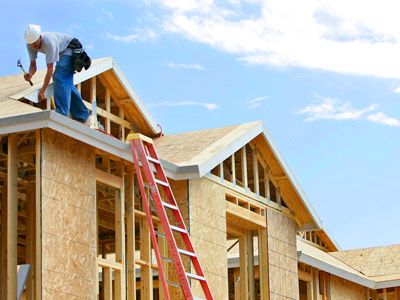Dependable Carmel Indiana General Contractor with Years of Experience
Dependable Carmel Indiana General Contractor with Years of Experience
Blog Article
Just How a General Service Provider Can Change Your Common Locations Into Useful Rooms
The makeover of typical locations right into functional rooms is a nuanced process that calls for a basic specialist's know-how in assessing certain area requirements and making tailored options. By considering factors such as format, ease of access, and visual appeal, a contractor can develop environments that not only offer functional functions however additionally foster community interaction.
Assessing Current Common Location Needs
When examining usual areas, it is important to recognize and recognize the specific requirements of the neighborhood they serve. This procedure starts with a comprehensive evaluation of existing usage patterns, which involves event data walking web traffic, optimal use times, and tasks taking place within these rooms. Involving with community members through meetings or studies can give valuable understandings right into their preferences and difficulties.
Next, it is essential to think about the market structure of the neighborhood, including age, way of life, and any type of special needs that may affect just how these rooms are made use of. For example, family members with kids might need backyard, while older adults may focus on access attributes.
Furthermore, assessing the existing infrastructure and amenities is crucial. Recognizing locations that are underutilized or in requirement of repair work can inform possible enhancements. Collaborating with stakeholders, such as residential property managers and local companies, guarantees that the assessment mirrors a detailed understanding of the community's demands.
Eventually, a meticulous analysis of present common location needs lays the foundation for efficient transformations, enabling the development of rooms that promote engagement and improve the total quality of life within the area.
Designing for Capability and Looks
An extensive understanding of area requires sets the stage for effective style that stabilizes performance and aesthetic appeals in common areas. Effective design needs a thoughtful strategy that thinks about both the sensible uses of the area and the aesthetic appeal that improves the setting.
Functional style involves developing spaces that satisfy the details activities and interactions of the neighborhood. This could include versatile seating plans for celebrations, accessible pathways for people with flexibility challenges, or designated areas for leisure tasks. Each component must serve a function while making certain ease of movement and comfort for users.
Aesthetics play a crucial role in fostering a welcoming environment. The option of shades, products, and illumination can dramatically influence the perception of a space. Incorporating natural elements, such as greenery or water features, can enhance the ambiance and create a relaxing setting. In addition, straightening the layout with the area's social identification can promote a feeling of belonging and pride.
Budgeting and Source Allowance
Efficient budgeting and source appropriation are essential elements in the successful transformation of usual locations. A well-defined budget lays out the monetary parameters within which the task have to run, guaranteeing that costs are regulated and sources are efficiently made use of. This starts with an extensive assessment of task demands, including layout elements, products, and my review here labor.

A basic service provider plays a vital function in this phase, teaming up with stakeholders to establish realistic spending plan price quotes that line up with the intended vision. By focusing on vital features and discovering economical alternatives, the service provider can maximize investing without jeopardizing quality.
Source allotment requires tactically assigning employees, devices, and materials to various phases of the task (Carmel In Contractor). This needs careful planning to make sure and stay clear of delays that each part is delivered in a timely manner. Additionally, routine surveillance of expenditures versus the spending plan helps to determine possible overruns early, permitting prompt changes
Managing Building Refine Efficiently
Handling the building and construction procedure efficiently is vital for accomplishing prompt job conclusion and keeping spending plan honesty. A well-coordinated strategy involves precise planning, clear communication, and effective resource management. General contractors should establish a comprehensive project timeline that outlines each phase of construction, permitting the recognition of critical landmarks and possible traffic jams.
Normal development meetings are essential for keeping all stakeholders educated and lined up. These meetings promote the prompt resolution of problems, guaranteeing that the project remains on track. Furthermore, utilizing job administration software application can improve communication, track progression, and handle documentation, reducing the chance of hold-ups and misunderstandings.
Reliable resource allowance is likewise paramount. By making certain that materials, labor, and tools are offered when needed, basic professionals can prevent expensive interruptions. Carrying out a proactive strategy to run the risk of monitoring additional boosts effectiveness, as it enables the identification and reduction of potential obstacles before they intensify.

Guaranteeing Compliance and Top Quality Criteria
Conformity and high quality standards are essential to the success of any kind of construction job, making certain that the finished spaces not just satisfy client expectations but likewise abide by regulatory demands. A basic contractor plays a critical function in applying these standards throughout the building process.
First, it is crucial for the contractor to stay updated on regional structure codes, safety and security regulations, and industry finest methods. This understanding allows them to lead layout choices and material selections that align with compliance requirements. Routine assessments and top quality assessments during the building and construction stage aid to Check This Out identify potential issues early, mitigating costly delays and rework.
Moreover, a respectable general professional promotes a culture of quality amongst subcontractors and employees. This can be accomplished by offering training on compliance protocols and implementing rigorous top anonymous quality control actions. By developing clear communication channels, the contractor can ensure that every person included comprehends their obligations regarding conformity and top quality.
Verdict
In conclusion, the duty of a basic professional in transforming usual areas right into functional rooms is essential. Via a comprehensive assessment of neighborhood needs, thoughtful design, careful budgeting, and reliable job monitoring, these experts can develop settings that enhance usability and visual appeal. Adherence to compliance and top quality requirements additionally ensures that renewed spaces not only fulfill the expectations of stakeholders however additionally foster engagement and enhance the general experience for all users within the area.
The makeover of common locations right into functional areas is a nuanced procedure that needs a basic service provider's competence in examining certain community needs and designing customized solutions. By considering aspects such as layout, availability, and visual charm, a contractor can create settings that not just serve practical functions but additionally foster community involvement. General contractors have to establish a detailed job timeline that lays out each phase of building, allowing for the identification of potential bottlenecks and critical landmarks.

Report this page